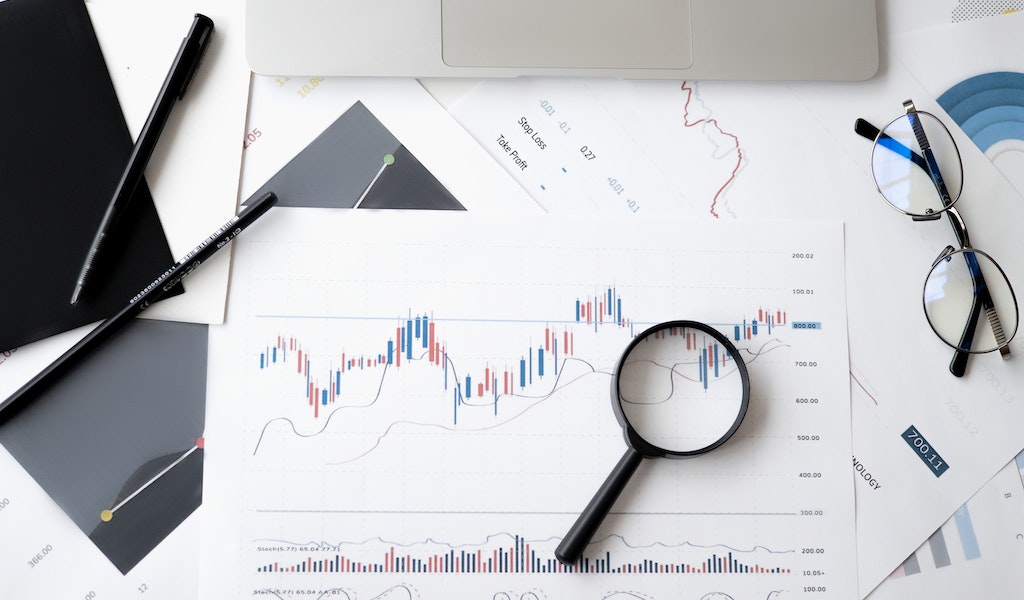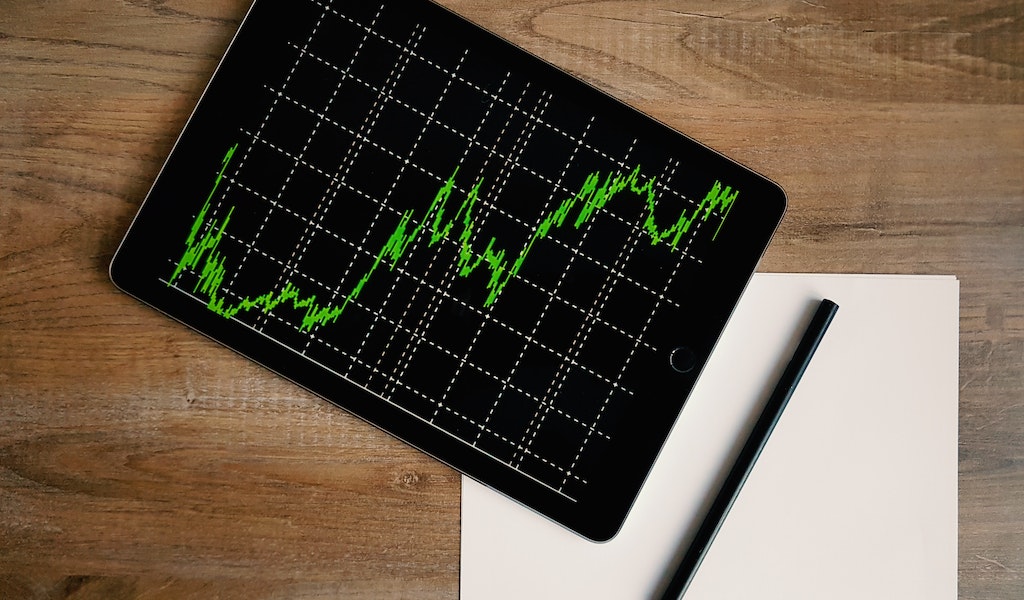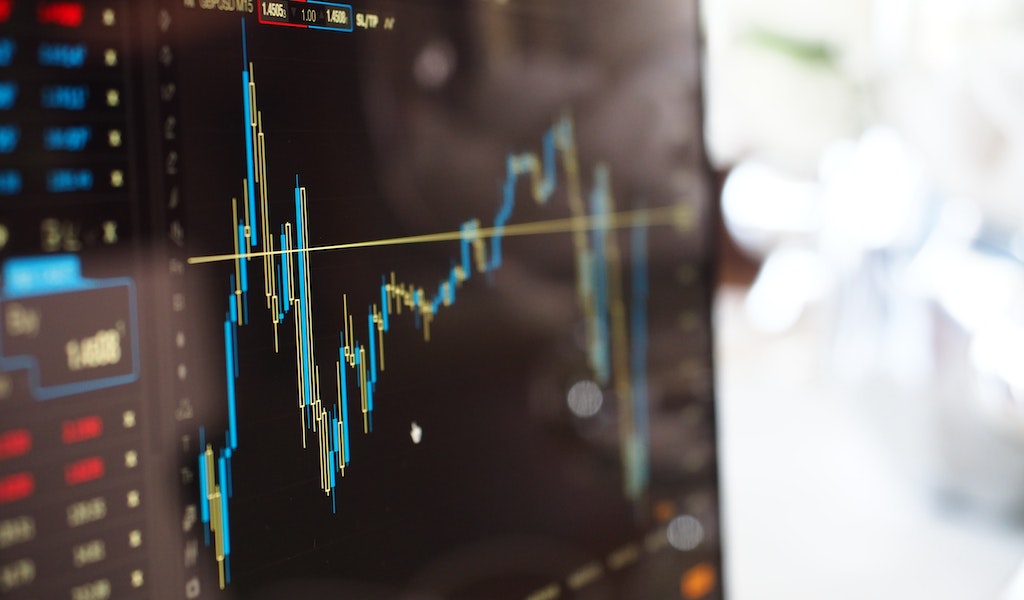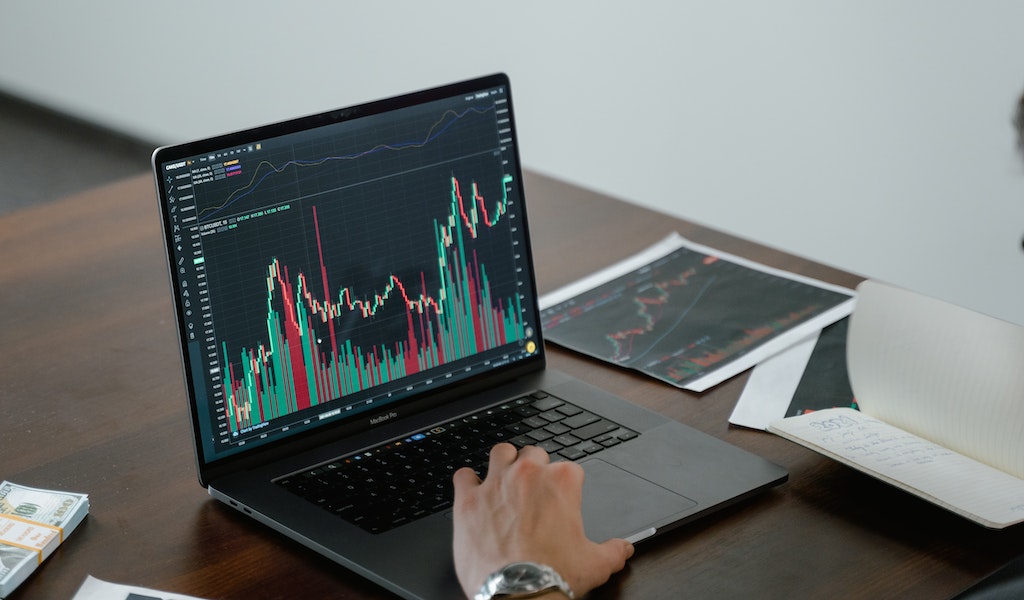Business
Intraday Trading: How To do, Strategies, Risks, Tips, And Rewards

(CTN NEWS) – Intraday trading is the buying and selling of securities within the same trading day. It is a popular way for traders to earn profits in the stock market by taking advantage of small price movements.
Unlike long-term investments, intraday traders do not hold onto their positions overnight, which means that they are not exposed to the risks that can occur when the market is closed.
In this article, we will discuss the strategies, risks, and rewards of intraday trading. We will also look at some of the popular intraday trading techniques traders use and provide some tips for beginners.
How to do Intraday Trading?
Intraday Trading involves buying and selling securities within the same trading day. Here are the steps to follow to do Intraday Trading:
- Choose the stocks: The first step in Intraday Trading is to choose the stocks you want to trade. Traders need to do thorough research and analysis to identify the stocks with good potential for Intraday Trading.
- Identify the entry and exit points: The second step is to identify the entry and exit points. Traders need to analyze the market trends, technical indicators, and news to determine the entry and exit points.
- Set the stop-loss: Setting a stop-loss is crucial in Intraday Trading. Traders need to set a stop-loss to limit their losses in case the trade goes against them.
- Execute the trade: Once the entry and exit points are identified, and the stop-loss is set, traders need to execute the trade.
- Monitor the trade: Traders need to monitor the trade closely to make sure that it is going as planned.
Choosing the Right Stocks for Intraday Trading

One of the most important factors in intraday trading is choosing the right stocks to trade.
Not all stocks are suitable for intraday trading, as some may have low liquidity, high volatility, or unpredictable movements. Here are some criteria to look for when selecting stocks for intraday trading:
- High liquidity: Liquidity refers to how easily and quickly a stock can be bought and sold without affecting its price. High liquidity means there are enough buyers and sellers in the market to execute your orders quickly and at a fair price. High liquidity also reduces the bid-ask spread, which is the difference between the highest price a buyer is willing to pay and the lowest price a seller is willing to accept. A lower spread means lower transaction costs and higher profits.
- High volatility: Volatility refers to how much a stock’s price fluctuates over time. High volatility means that there are large price movements in both directions, which creates more opportunities for intraday traders to profit from. However, high volatility also means higher risk, as the price can move against you quickly and unpredictably. Therefore, you need a good risk management system to limit your losses and protect your profits.
- Strong trend or momentum: Trend or momentum refers to the direction and strength of a stock’s price movement over time. A strong trend or momentum means that there is a clear and consistent pattern of price movement in one direction, either up or down. This makes it easier to identify entry and exit points and follow the trend until it reverses. You can use various technical analysis tools and indicators to determine the trend or momentum of a stock, such as moving averages, trend lines, or oscillators.
Intraday Trading Strategies
Successful intraday traders use a variety of strategies to earn profits. Here are some of the most popular intraday trading strategies:
- Scalping: This popular intraday trading strategy involves buying and selling securities within minutes or seconds to take advantage of small price movements.
- Momentum Trading: This involves buying securities that are trending in a particular direction and selling them when they start to lose momentum.
- Range Trading: This involves buying securities when they are near the lower end of their trading range and selling them when they reach the upper end of their range.
- News Trading: This involves buying or selling securities based on news events or market rumors.
- Breakout Trading: This involves buying securities when they break above a resistance level or sell securities when they break below a support level.
While these strategies can be profitable, they come with risks that traders should be aware of.
Risks of Intraday Trading

Intraday trading is a high-risk, high-reward activity. Here are some of the risks that traders should be aware of:
- Volatility: Intraday traders are exposed to volatility, which can result in significant losses if they are not careful.
- Lack of Diversification: Intraday traders usually focus on a few stocks or securities, which can lead to a lack of diversification and increase risk.
- Emotional Trading: Intraday traders are more susceptible to emotional trading, which can lead to impulsive decisions and losses.
- Market Risk: Intraday traders are exposed to market risks, which can be unpredictable and result in losses.
- Technology Risk: Intraday traders rely heavily on technology to execute trades, which can result in losses if there are technical glitches or malfunctions.
Despite these risks, intraday trading can be a rewarding way to earn profits in the stock market.
Rewards of Intraday Trading
Intraday trading can be a lucrative way to earn profits in the stock market. Here are some of the rewards that traders can expect:
- High Returns: Intraday traders can earn high returns on their investments, especially if they use leverage.
- Flexibility: Intraday traders have the flexibility to trade whenever they want, as long as the market is open.
- Quick Profits: Intraday traders can earn quick profits within minutes or hours, which can be appealing for those who want to earn money quickly.
- Low Capital Requirements: Intraday trading requires low capital requirements, which means that traders can start with small amounts of money.
While the rewards of intraday trading can be appealing, traders should be aware of the risks and make informed decisions.
Tips for Intraday Traders

- Have a Plan: Before starting a trade, intraday traders should have a well-defined plan that includes entry and exit points, stop-loss levels, and profit targets.
- Manage Risk: Intraday traders should always manage their risk by setting stop-loss orders to limit their losses.
- Control Emotions: Intraday traders should avoid emotional trading and stick to their plan, even when the market is volatile.
- Learn Technical Analysis: Intraday traders should learn technical analysis to identify trends and patterns in the market.
- Stay Informed: Intraday traders should stay informed about market news and events that can affect their trades.
- Keep a Trading Journal: Intraday traders should keep a trading journal to track their trades, identify mistakes, and improve their strategies.
By following these tips, intraday traders can increase their chances of success and reduce their risks.
Pros and Cons of Intraday Trading
Like any investment strategy, intraday trading has its pros and cons. Here are some of them:
Pros
- High Returns: Intraday trading can offer high returns, especially if traders use leverage and have a successful strategy.
- Flexibility: Intraday traders have the flexibility to trade whenever they want, which can be appealing for those with busy schedules.
- Quick Profits: Intraday trading can offer quick profits within minutes or hours, which can be appealing for those who want to earn money quickly.
- Low Capital Requirements: Intraday trading requires low capital requirements, which means that traders can start with small amounts of money.
Cons
- High Risk: Intraday trading is a high-risk activity that can result in significant losses if traders are not careful.
- Emotional Trading: Intraday traders are more susceptible to emotional trading, which can lead to impulsive decisions and losses.
- Lack of Diversification: Intraday traders usually focus on a few stocks or securities, which can lead to a lack of diversification and increase risk.
- Time-Consuming: Intraday trading can be time-consuming, as traders need to monitor the market closely and make quick decisions.
In summary, intraday trading can be a profitable way to earn money in the stock market, but it comes with risks that traders should be aware of.
Conclusion
Intraday trading can be a profitable way to earn money in the stock market, but it comes with risks that traders should be aware of.
By following the tips and strategies outlined in this article, intraday traders can increase their chances of success and reduce their risks.
It is important to remember that intraday trading is not for everyone and requires a lot of discipline, patience, and knowledge.
As with any investment strategy, traders should do their research and make informed decisions.
RELATED CTN NEWS:
Business Loans For Women: How to Apply in 2023?
TradingView Alternatives: Top 10 Best Platforms For Technical Analysis

Business
PepsiCo Reduces Revenue Projections As North American Snacks And Key International Markets Underperform.

(VOR News) – In the third quarter of this year, Pepsi’s net income was $2.93 billion, which is equivalent to $2.13 per share. This was attributed to the company.
This is in stark contrast to net income of $3.09 billion, which is equivalent to $2.24 per share, during the same period in the previous year. The company’s earnings per share were $2.31 when expenses were excluded.
Net sales decreased by 0.6%, totaling $23.32 billion. Organic sales increased by 1.3% during the quarter when the effects of acquisitions, divestitures, and currency changes are excluded.
Pepsi’s beverage sales fell this quarter.
The most recent report indicates that the beverage and food sectors of the organization experienced a 2% decline in volume. Consumers of all income levels are demonstrating a change in their purchasing habits, as indicated by CEOs’ statements from the previous quarter.
Pepsi’s entire volume was adversely affected by the lackluster demand they encountered in North America. An increasing number of Americans are becoming more frugal, reducing the number of snacks they ingest, and reducing the number of times they purchase at convenience stores.
Furthermore, Laguarta observed that the increase in sales was partially attributed to the election that occurred in Mexico during the month of June.
The most significant decrease in volume was experienced by Quaker Foods North America, which was 13%. In December, the company announced its initial recall in response to a potential salmonella infection.
Due to the probability of an illness, the recall was extended in January. Pepsi officially closed a plant that was implicated in the recalls in June, despite the fact that manufacturing had already been halted.
Jamie Caulfield, the Chief Financial Officer of Pepsi and Laguarta, has indicated that the recalls are beginning to have a lessening effect.
Frito-Lay experienced a 1.5% decline in volume in North America. The company has been striving to improve the value it offers to consumers and the accessibility of its snack line, which includes SunChips, Cheetos, and Stacy’s pita chips, in the retail establishments where it is sold.
Despite the fact that the category as a whole has slowed down in comparison to the results of previous years, the level of activity within the division is progressively increasing.
Pepsi executives issued a statement in which they stated that “Salty and savory snacks have underperformed year-to-date after outperforming packaged food categories in previous years.”
Pepsi will spend more on Doritos and Tostitos in the fall and winter before football season.
The company is currently promoting incentive packets for Tostitos and Ruffles, which contain twenty percent more chips than the standard package.
Pepsi is expanding its product line in order to more effectively target individuals who are health-conscious. The business announced its intention to acquire Siete Foods for a total of $1.2 billion approximately one week ago. The restaurant serves Mexican-American cuisine, which is typically modified to meet the dietary needs of a diverse clientele.
The beverage segment of Pepsi in North America experienced a three percent decrease in volume. Despite the fact that the demand for energy drinks, such as Pepsi’s Rockstar, has decreased as a result of consumers visiting convenience stores, the sales of well-known brands such as Gatorade and Pepsi have seen an increase throughout the quarter.
Laguarta expressed his opinion to the analysts during the company’s conference call, asserting, “I am of the opinion that it is a component of the economic cycle that we are currently experiencing, and that it will reverse itself in the future, once consumers feel better.”
Additionally, it has been noted that the food and beverage markets of South Asia, the Middle East, Latin America, and Africa have experienced a decline in sales volume. The company cut its forecast for organic revenue for the entire year on Tuesday due to the business’s second consecutive quarter of lower-than-anticipated sales.
The company’s performance during the quarter was adversely affected by the Quaker Foods North America recalls, the decrease in demand in the United States, and the interruptions that occurred in specific international markets, as per the statements made by Chief Executive Officer Ramon Laguarta.
Pepsi has revised its forecast for organic sales in 2024, shifting from a 4% growth rate to a low single-digit growth rate. The company reiterated its expectation that the core constant currency profitability per share will increase by a minimum of 8% in comparison to the previous year.
The company’s shares declined by less than one percent during premarket trading. The following discrepancies between the company’s report and the projections of Wall Street were identified by LSEG in a survey of analysts:
SOURCE: CNBC
SEE ALSO:
Old National Bank And Infosys Broaden Their Strategic Partnership.
Business
Old National Bank And Infosys Broaden Their Strategic Partnership.

(VOR News) – Old National Bank, a commercial bank with its headquarters in the Midwest, and Infosys, a firm that specializes in information technology, have recently entered into a strategic expansion of their link, which has been in place for the past four years.
This expansion is more likely to take place sooner rather than later, with the likelihood being higher.
For the purpose of making it possible for Old National Bank to make use of the services, solutions, and platforms that are offered by Infosys, the objective of this expansion is to make it possible for the bank to transform its operations and processes through the application of automation and GenAI, as well as to change significant business areas.
This lets the bank leverage Infosys’ services, solutions, and platforms.
Old National Bank Chairman and CEO Jim Ryan said, “At Old National, we are committed to creating exceptional experiences for both our customers and our fellow employees.”
This statement is applicable to Old National Bank. Infosys is carefully managing the business process innovations that it is putting us through, putting a strong emphasis on efficiency and value growth throughout the process to ensure that it is carried out efficiently.
This is a routine occurrence throughout the entire operation. Because of Infosys’ dedication to our development and success, we are incredibly appreciative of the assistance they have provided.
Old National has been receiving assistance from Infosys in the process of updating its digital environment since the year 2020, according to the aforementioned company.
Ever since that time, the company has been providing assistance. The provision of this assistance has been accomplished through the utilization of a model that is not only powerful but also capable of functioning on its own power.
Infosys currently ranks Old National thirty-first out of the top thirty US banks.
This ranking is based on the fact that Old National is the nation’s largest banking corporation.
It is estimated that the total value of the company’s assets is approximately fifty-three billion dollars, while the assets that are currently being managed by the organization are valued at thirty billion dollars.
Dennis Gada, the Executive Vice President and Global Head of Banking and Financial Services, stated that “Old National Bank and Infosys possess a robust cultural and strategic alignment in the development, management, and enhancement of enterprise-scale solutions to transform the bank’s operations and facilitate growth.”
This remark referenced the exceptional cultural and strategic synergy between the two organizations. Dennis Gada is the one who asserted this claim. This was articulated explicitly concerning the exceptional cultural congruence and strategy alignment of the two organizations.
We are pleased to announce that the implementation of Infosys Topaz will substantially expedite the transformation of Old National Bank’s business processes and customer service protocols. We are exceedingly enthusiastic about this matter. We are quite thrilled about this specific component of the scenario.
Medium-sized banks operating regionally will continue to benefit from our substantial expertise in the sector, technology, and operations. This specific market segment of Infosys will persist in benefiting from our extensive experience. This phenomenon will enable this market sector to sustain substantial growth and efficiency benefits.
SOURCE: THBL
SEE ALSO:
American Water, The Largest Water Utility In US, Is Targeted By A Cyberattack
States Sue TikTok, Claiming Its Platform Is Addictive And Harms The Mental Health Of Children
Qantas Airways Apologizes After R-Rated Film Reportedly Airs On Every Screen During Flight
Business
American Water, The Largest Water Utility In US, Is Targeted By A Cyberattack

The largest regulated water and wastewater utility company in the United States stated Monday that it had been the target of a cyberattack, forcing the company to halt invoicing to consumers.
American Water, The Largest Water Utility In US, Is Targeted By A Cyberattack
American Water, based in New Jersey and serving over 14 million people in 14 states and 18 military facilities, said it learned of the unauthorized activity on Thursday and quickly took precautions, including shutting down certain systems. The business does not believe the attack had an impact on its facilities or operations and said employees were working “around the clock” to determine the origin and scale of the attack.

According to their website, American Water operates over 500 water and wastewater systems in around 1,700 communities across California, Georgia, Hawaii, Illinois, Indiana, Iowa, Kentucky, Maryland, Missouri, New Jersey, Pennsylvania, Tennessee, Virginia, and West Virginia.
SOURCE | AP
-

 News3 years ago
News3 years agoLet’s Know About Ultra High Net Worth Individual
-
Entertainment2 years ago
Mabelle Prior: The Voice of Hope, Resilience, and Diversity Inspiring Generations
-

 Health4 years ago
Health4 years agoHow Much Ivermectin Should You Take?
-

 Tech2 years ago
Tech2 years agoTop Forex Brokers of 2023: Reviews and Analysis for Successful Trading
-

 Lifestyles3 years ago
Lifestyles3 years agoAries Soulmate Signs
-

 Movies2 years ago
Movies2 years agoWhat Should I Do If Disney Plus Keeps Logging Me Out of TV?
-

 Health3 years ago
Health3 years agoCan I Buy Ivermectin Without A Prescription in the USA?
-

 Learning3 years ago
Learning3 years agoVirtual Numbers: What Are They For?